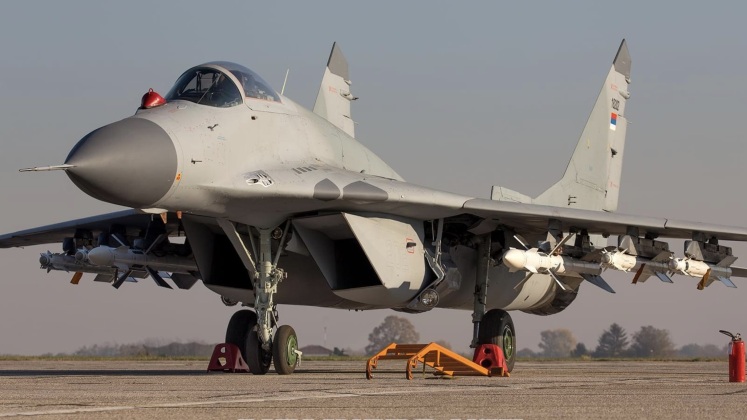News
Serbia to Buy French Rafale Fighters in Major Break From Russia: What Belgrade’s Pivot Means For Its Air Defences
On April 9 following years of speculation regarding the future of the Serbian fighter fleet the country’s president Aleksandar Vucic said that had “reached concrete agreements regarding the purchase of the Rafale fighter jets” during talks with his French counterpart Emmanuel Macron. “The contract is expected to be signed in the next two months and in the presence of the president of France,” he stated. It remains uncertain whether these aircraft will replace or serve alongside the country’s current fleet of 14 MiG-29 fighters, the newest of which were donated in 2017 from Russian stocks and modernised to a ‘4+ generation’ standard. If the MiGs are retained it would open up the possibility that Serbia will operate both Russian and NATO standard fighters simultaneously, as many neutral states such as India, Egypt, Malaysia and Indonesia have done.
Neutral states including Serbia have come under considerable pressure from across the Western world not to purchase of Russian military hardware, with Belgrade having been threatened with American economic sanctions much as India, Egypt, and several others have been. These threats notably derailed plans for the acquisition of S-400 air defence systems from Russia, although in that case Serbia avoided fostering reliance on Western equipment and instead purchased HQ-22 systems from China. It was previously speculated that Serbia could seek to acquire Chinese fighters to avoid either reliance on NATO equipment or Western sanctions. Where Serbia’s location in Europe has left it vulnerable to sanctions threats, in 2023 Kazakhstan and Ethiopia both decided against the Rafale to acquire Russian Su-30 fighters, following Algeria’s prior decision to do the same, with none of these countries being economically as dependant on or as geopolitically vulnerable to the Western Bloc states.

Fighters and air defences are a particularly sensitive issue in Serbia due to the recent historical memory of intensive bombardment by NATO forces, which occurred on a limited scale throughout much of the 1990s but escalated very significantly from March 1999 with devastating effects on public health and civilian infrastructure. Nevertheless, as Serbia has sought accession into the European Union, European officials have drawn a particularly hard line against neutrality and made clear that converting to NATO standard military hardware is required from the country. Operating Rafale fighters will leave Serbia dependant on France for spare parts and munitions, with the country known to have installed kill switches on its aircraft and air launched missile to prevent them from being used against French interests. French long range air launched weapons are also reliant on American GPS guidance, meaning guided strikes will not be possible should Washington cut off support. With the announcement coming shortly after the 25th anniversary of the beginning of the NATO bombing campaign, the purchase indicates an intention by Serbia to move further into the Western sphere of influence. The future of the country’s MiG-29 fleet, however, remains uncertain, as do the details of the Rafale contract agreed on including the kind of munitions that will be supplied. The acquisition also raises significant questions regarding how the NATO standard aircraft will be integrated into the country’s Soviet, Chinese and Russian air defence network.












